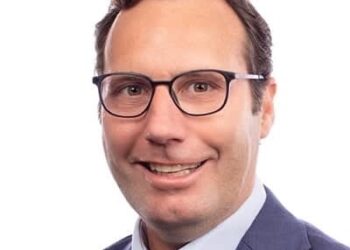The crux of the issue lies in the human element of our industry.
Technology hasn’t quite yet reached a point where it can shoulder the bulk of advisory tasks, so large chunks of the advice process remain largely manual and human-dependent.
And as growing firms find themselves needing to serve more clients, the need for skilled advisers becomes more critical. The stark reality is it’s no secret that the number of advisers since the post-royal commission purge has plummeted by about 50 per cent between 2019 and 2023.
While some suggest this has been a necessary pruning of less capable and less ethical performers, the exodus has also included many seasoned professionals disillusioned by regulatory changes and the dual burnout exacerbated by the pandemic and elevated re-education requirements.
This talent drain is compounded by the worrying trend of fewer and fewer individuals pursuing the qualifications necessary to enter the advisory field.
We may need 5,000 new advisers in the next two years, but the pipeline is alarmingly dry.
That’s just at the feeder end of the cycle. There’s strong evidence that those entering the field, while technically strong, are unprepared for the realisation of elements of the role around client engagement, lead generation, and the myriad tasks that differentiate a well-educated adviser from someone capable of managing a book of clients.
It’s also important to acknowledge the role cultural fit can play.
I’ve witnessed enough cases of the same adviser struggle in one environment only to thrive in another to know that some methods of advising suit some better than others. It doesn’t help that if you were to put 20 practices in a room, most often you’d discover 19 different ways of operating, and not always in ways that provide any real benefit.
However, it’s more than that. Lately, there’s a concerning churn among younger advisers that suggests a deeper disconnect.
One theory sees many fresh graduates entering the field with high aspirations, only to find the path to success more challenging than anticipated. The allure of an instant higher salary hike elsewhere can be tempting, especially when faced with an alternative pathway with targets that may seem unobtainable.
There’s a flip side to this, too.
The reality of mentoring and training new advisers is an investment of time. For practice owners already under time pressure, it can be a luxury they cannot afford, especially if the return on investment may be 18–24 months down the track, and stats suggesting a PY adviser may well move on before they see their third year out.
Yet, without nurturing the next generation of advisers, growth businesses face inevitable constraints.
While technology offers a glimmer of hope, our industry remains fundamentally human-driven, and the gap between the advisers needed and advisers available is getting wider.
It’s not a problem that will be solved quickly while the barriers to entry remain so high. The general advice model is one potential solution to the insurance problem. Digital platforms like Scientiam are another.
However, unless we can find better ways to attract, train and retain talent, and more truly innovative ways that move advisers towards being able to service more clients, we will continue to have a ceiling upon growth that may prove to be the most insurmountable hurdle.
Stewart Bell, business coach and founder, Audere Coaching & Consulting




Stuart, you are right in every aspect of your article; however, the elephant in the room is that a pool of people left the industry due to age and re-education requirements imposed in 2019. Some could return to it, given the changes introduced during the last labor government term that allow some people to return to the industry they spent 30-plus years in.
Granted, they may not want to take on senior positions or work full-time, but they could mentor the new entrants in the soft skills that universities don’t teach and do client-facing roles, etc., that owners no longer have time for.
It seems the industry is not considering all the resources to deal with this transitional phase.
It’s a really good point to make.
The stats shared with me by Stephen Prendeville really opened my eyes to the fact that, although a lot of less capable advisers exiting, a lot of those rated highly on the compliance scale also did the same.
It was a bit of a drag net expedition.
I hope we get some of that experience back.
General advice results in poor advice and client results so isn’t a solution to the insurance issue. Offshore as much as you can for administration help. I refuse to employ another financial planner until the mess this profession faces is fixed because I don’t hate anyone enough to put them through the pain that it involves.
Hey there,
General “Advice” is a bad name for it, as there’s literally no advice in it.
It depends on a) education and b) what the client communicates they want.
I like the model. I get that you don’t. I don’t know the details as to why, but with 2/3 of people seeking cover dropping out if the process, another solution is needed (that isn’t underwritten at the time of claim or, vbt default, way lower than what most people need).
Sounds like you’ve been doing it tough. If you want to chat about it, stewart@audere.com.au
Funny that firms are struggling to find talent, yet I was unemployed for 4 months because I wanted to understand long-term progression and was asking for a fair rate in line with the market. Companies wanted me to be content being stuck in an admin role for another 5 years (or forever), or to do more work than I had been for less than I was worth. Advice practices need to take ownership of the fact that they are by and large refusing to put in the hard yards to nurture the talent. They need to provide genuine incentives and rewards for seeing the process through. No, don’t give a new candidate everything on a platter, but try and set them up to succeed. The same principle as investing, whatever you do now will return a compounded benefit in the long run if you get the structure right. Stop being lazy and tight with your purse strings, and maybe talented prospects won’t jump ship for more money and less stress to work for a fund manager 🙂
I don’t know the details, but that part where I talked about employee-firm fit is important.
Hope you’ve found something that works for you now.